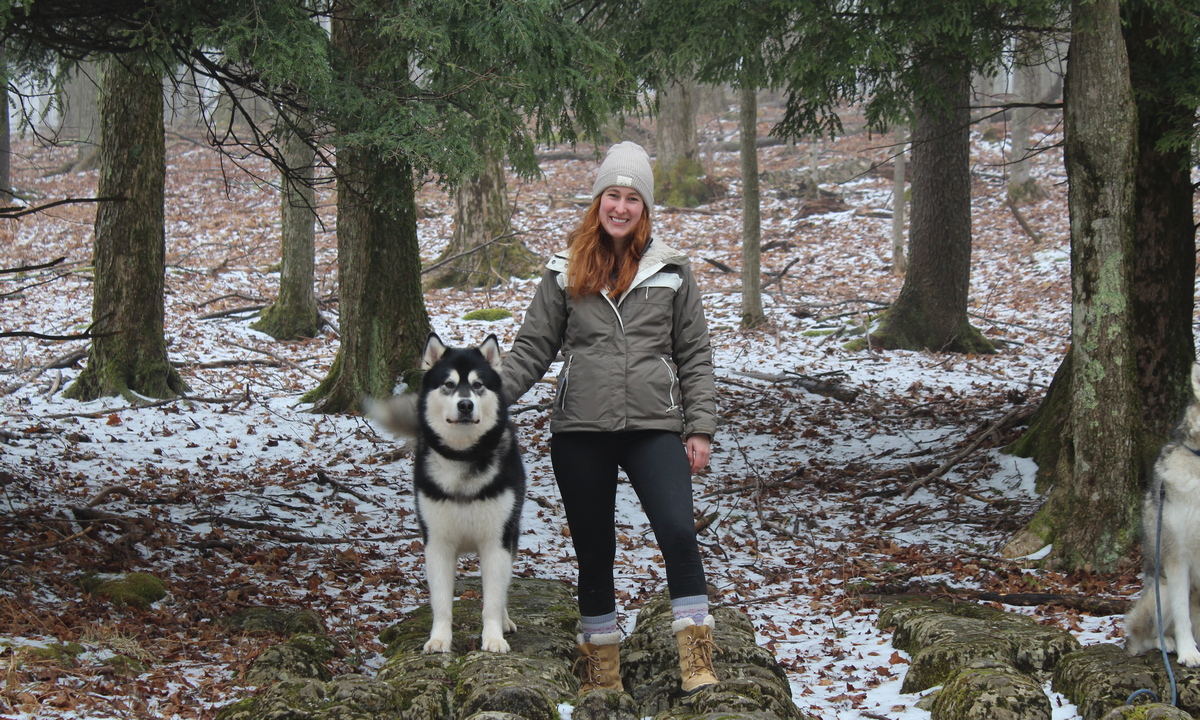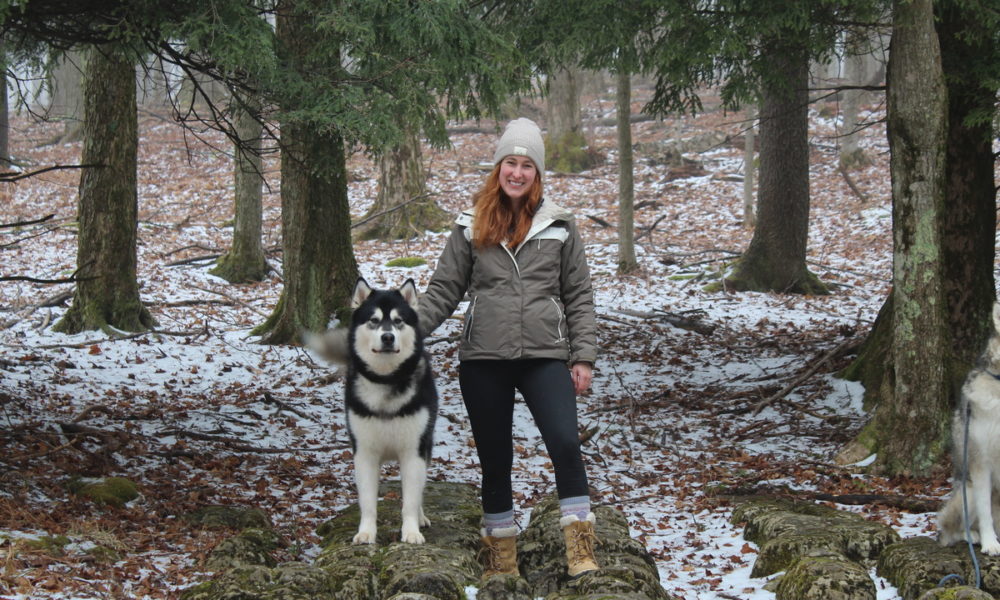september 2020 KPA CTP of the Month

As one of Chelsea’s goals was to open her own company, she appreciated that the KPA DTP program “helped me learn the fundamentals of business and how to teach people.” Chelsea developed her passion for animals during college but needed the DTP to provide the full picture. “The program helped me fill the gaps within my education so that I could be fully successful as a trainer: owning a business, communicating with clients, and teaching animals.”
Chelsea remembers feeling intimidated by the thought of facing the 10-part behavior chain assignment, which was necessary to complete the DTP program. “As I worked on cleaning up the behaviors that would be in the chain, I realized that I had a lot of work to do to get them all under stimulus control.” Chelsea worked with Lucy, her one-year-old Alaskan Malamute, during the KPA course. “She was easy to free shape because she offered lots of behaviors.” However, Lucy even offered behaviors in the absence of a cue. “When there was any pause in my directions, she would offer a behavior—or sometimes two or three!” Chelsea began to reward Lucy for stillness to help her learn to wait patiently for cues, to improve her focus, and to lower her arousal level. “I continue to teach and use the still behavior with clients and their dogs when we are working on impulse control.” Lucy and Chelsea mastered the DTP’s 10-part chain assessment, of course!
Chelsea believes that clicker training has impacted her entire life. She says, “My personal passions have become professional passions with the help of clicker training.” When Chelsea first started learning about and training her own dogs for mushing sports, she noticed the lack of information about how to use positive reinforcement training techniques to teach the foundational behaviors. No problem! “Thanks to my knowledge of clicker training, I was able to develop effective and positive training plans to teach my dogs the skills they need for us to enjoy the sport together!” Mushing not only became part of Chelsea’s lifestyle, but she now brings the sport into others’ homes “helping people and their dogs get fit together.” Chelsea points out that clicker training is a good option for mushing sports. “Not only does it help you teach a behavior reliably and put it on cue, but it creates a thoughtful dog that enjoys working, valuable traits in a mushing partner.”
Canicross and bikejoring are on Chelsea’s work and play agendas. Her first dog, Jude, was an Alaskan Malamute. “I read constantly about that breed, enrichment, and training, and that’s how I came across canicross and bikejoring. I was living in a townhome in Georgia and was intrigued by the idea that I could meet Jude’s physical and mental needs in this fun and active sport—even without snow!” Chelsea did not have access to an experienced canicross or bikejoring team to help her learn. “Fortunately, I had clicker training in my life,” she says. Chelsea developed training plans for beginning behaviors on foot or bike, such as turning in a specific direction, passing distractions, and changing speeds on cue. It was a huge learning experience. Now Chelsea and her husband enjoy canicross, bikejoring, and scootering together with their dogs. “From fall to early spring, our time is spent on the trails with our dogs.” The family also vacations yearly in West Virginia or Colorado to mush in the snow. Chelsea is happy to share her passions for canine sports in a local mushing club she helps guide and through the canicross and bikejoring courses she offers to clients online.
Clicker training has also been essential to Chelsea’s conformation dog showing activities. In 2015, Chelsea’s first show dog entered her life, an Alaskan Malamute named Lennon. “While I was not new to the breed, conformation was a brand-new experience for me.” She taught every aspect of the pair’s show routine with clicker training—from animal husbandry for grooming to Lennon’s show-ring routine. “Showing my first dog as an owner-handler was a learning experience. Despite outside pressure, I was determined to do it all with positive reinforcement techniques,” explains Chelsea. “I use clicker training to implement behavior-shaping plans to solve all of our ring challenges.” Chelsea enjoys helping others learn what she has learned.
An associate trick-dog instructor, Chelsea offers trick training to clients, too. She sees trick training as “a wonderful way to improve people’s relationships with their dogs, a dog's body awareness, and human mechanics.” Chelsea’s clients “love teaching tricks.” Fun trick training helps clients enjoy the training process even more. Chelsea points out that “many cute tricks (like hand targets) have practical applications.”
Completing the KPA DTP program not only provided the tools Chelsea needs and uses professionally (she has launched her own company, Pawsitive Futures), but the course has impacted her personally. “My KPA mindset helps me address new challenges by thinking outside of the box and employing positive problem-solving. I enjoy looking for the positives in animals and in my life.”

My KPA mindset helps me address new challenges by thinking outside of the box and employing positive problem-solving.

Chelsea is a lifelong student. “I really enjoy all of the continuing education conferences, webinars, and classes that help me maintain professional certification and stay up to date on new research for myself and clients.” Chelsea is a CPDT-KA (Certified Professional Dog Trainer-Knowledge Assessed) and is currently enrolled at the University of Tennessee studying canine fitness.
Looking ahead, one of Chelsea's goals is to spread the value and success of clicker training within the communities that pursue conformation, working sports (weight pull, backpacking, and mushing), and obedience titles with working breeds like her favorite, the Alaskan Malamute. "I want to share with others how effective clicker training can be for all dog breeds."

